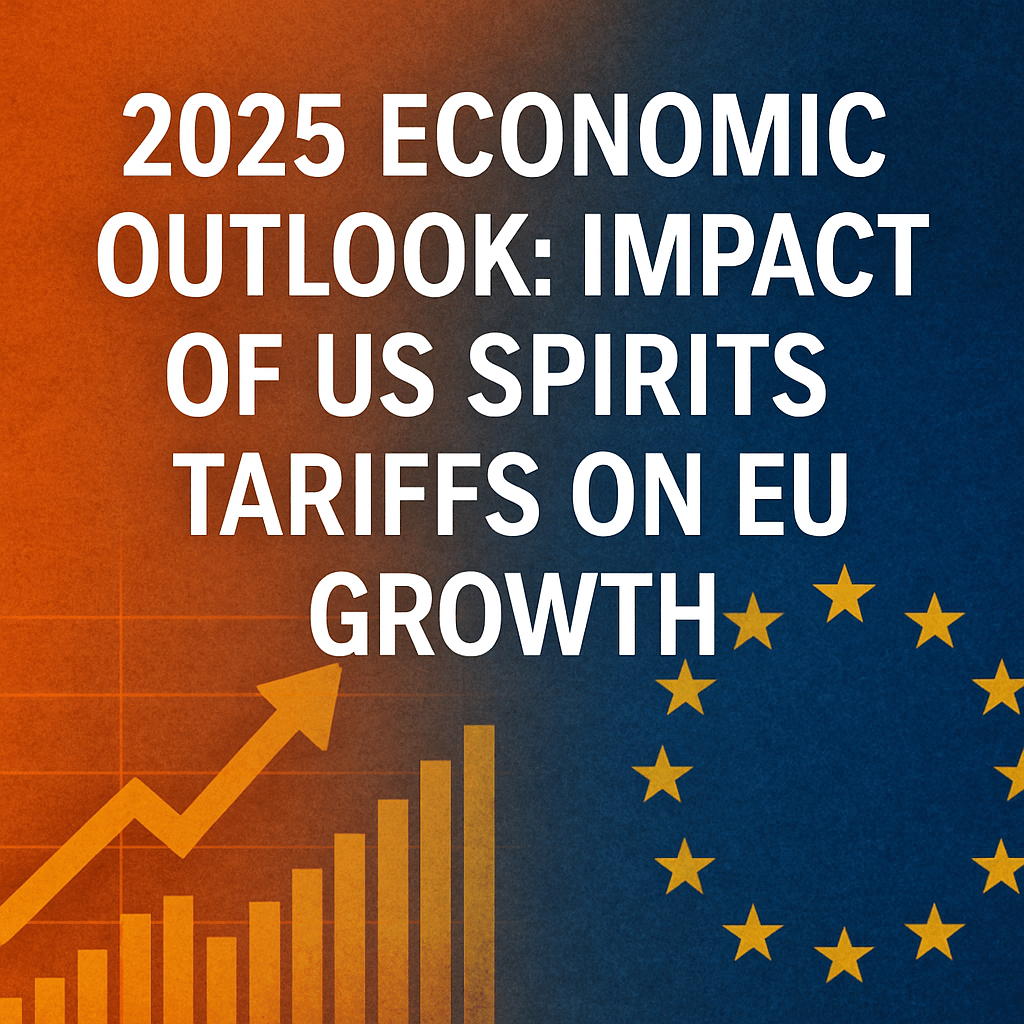2025 Economic Outlook: Impact of US Spirits Tariffs on EU Growth

As the European Union prepares its spring 2025 GDP projections, one factor gaining prominence is the impact of US trade measures on key export sectors. London-listed Diageo, the world’s largest spirits maker by revenue, forecasts an annual hit of $150 million (€134 million) from US tariffs introduced under the previous administration. This article examines Diageo’s financial outlook, the broader macroeconomic implications for EU growth, and strategic responses by industry participants.
Diageo’s Trade Exposure and Revenue Impact
- Tariff lines HS2208 (whisky, gin, vodka): duties up to 50% on EU spirits exports to the US
- Annualised earnings drag: $150 million, equivalent to ~0.6% of group operating profit
- Global footprint: 130+ production sites, with 20% of volumes destined for North America
- Brands affected: Johnnie Walker, Guinness, Gordon’s gin, Smirnoff vodka
“We view the near-term industry pressure as largely macroeconomic driven, with continued uncertainty impacting both the timing and pace of recovery,” said Debra Crew, Chief Executive of Diageo.
Financial Performance and Outlook
In the third quarter of fiscal 2025 (ending March), Diageo achieved 5.9% organic net sales growth, lifting net revenues to $4.4 billion, up 2.9% year-on-year. However, its London-listed share price has declined over 21% in the past 12 months amid top-line pressures and currency volatility.
- Cost savings programme: $500 million over three years, targeting improved operating leverage and reinvestment in premiumisation
- Operating profit outlook: Organic operating profit to be slightly lower in H2 FY25 versus prior year after tariffs
- FY26 guidance: Positive operating leverage, organic profit growth outpacing sales, and $3 billion free cash flow forecast
Wider Economic Implications for EU Growth
According to modelling by the European Commission’s Directorate-General for Economic and Financial Affairs, additional US duties on spirits and other manufactured goods could shave 0.3 to 0.5 percentage points off EU GDP growth in 2025. That would reduce the baseline forecast from roughly 1.6% to 1.2%.
Sectoral Spillovers
- Downstream retail and hospitality: Price pass-through factors, with up to 60% of duty increases reflected in consumer prices; demand elasticity estimated at -0.8 for premium spirits.
- Supply chain constraints: Input cost inflation for glass bottles and bulk alcohol, with tariffs applied at multiple stages.
- Currency effects: A stronger US dollar boosts local-currency revenues in Europe but raises the US import bill.
Supply Chain Dynamics and Hedging Strategies
Industry players are deploying financial hedges and operational tactics to insulate margins. Technical strategies include:
- Forward currency contracts to lock in EUR/USD at current rates (around 1.09) over 12–24 months.
- Tariff engineering: Modifying bottling locations to shift tariff incidence under the Harmonized System.
- Inventory pre-positioning: Accelerating shipments before tariff expiry dates to front-load costs.
Expert Assessment
Barclays analysts estimate that, with full pass-through, US spirits tariffs could contribute 25 basis points to US consumer price inflation while trimming EU inflation by 10–15 bps via lower import price indices. John Smith, Senior Director at Moody’s, notes, “Multinationals with diversified channels and dynamic pricing will weather the shocks better than niche, regionally exposed distillers.”
Long-Term Strategies and Regulatory Landscape
The EU is pursuing dispute resolution at the World Trade Organization and has signalled reciprocal duties on $4 billion of US consumer goods, including bourbon whiskey and cosmetics. Future developments hinge on ongoing negotiations under the WTO Article 301 framework and any legislative actions by the incoming US administration.
Outlook for Fiscal 2026 and Beyond
Looking to FY26 (starting July 2025), Diageo expects to:
- Deliver operating profit growth ahead of net sales, driven by premiumisation and mix improvement.
- Generate $3 billion in free cash flow, enabling share buybacks and debt reduction.
- Expand margins by 30–50 basis points through continuous cost optimisation and digital acceleration.
Overall, while US tariffs pose a measurable headwind, diversified export streams and strategic hedging could mitigate the impact on EU growth. Policymakers and industry leaders will closely monitor tariff negotiations and macroeconomic indicators as the spring 2025 forecast crystallises.